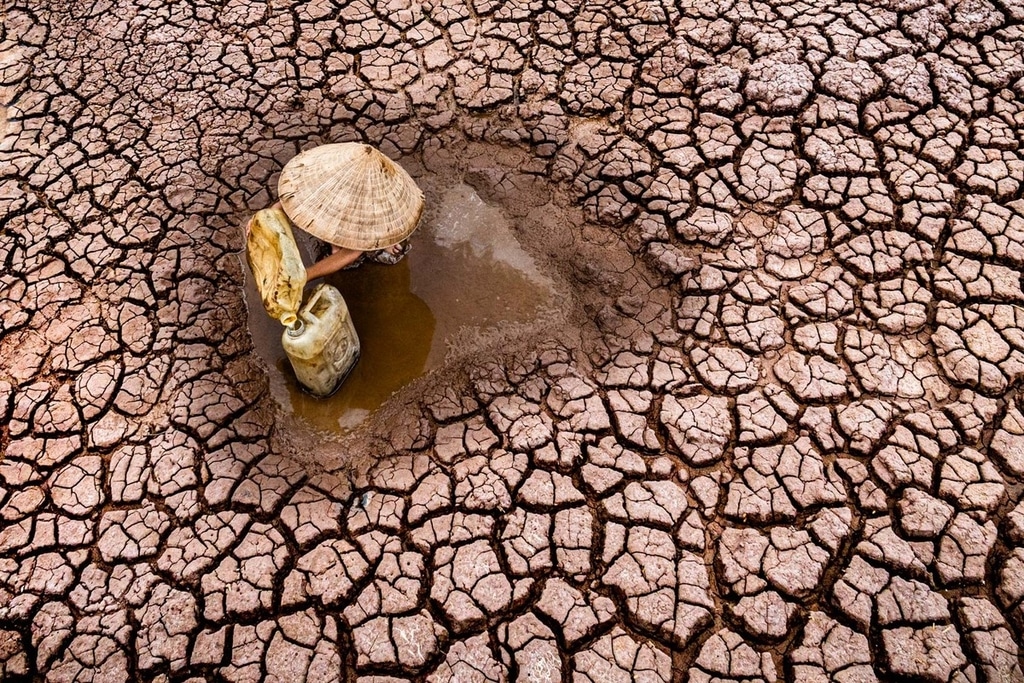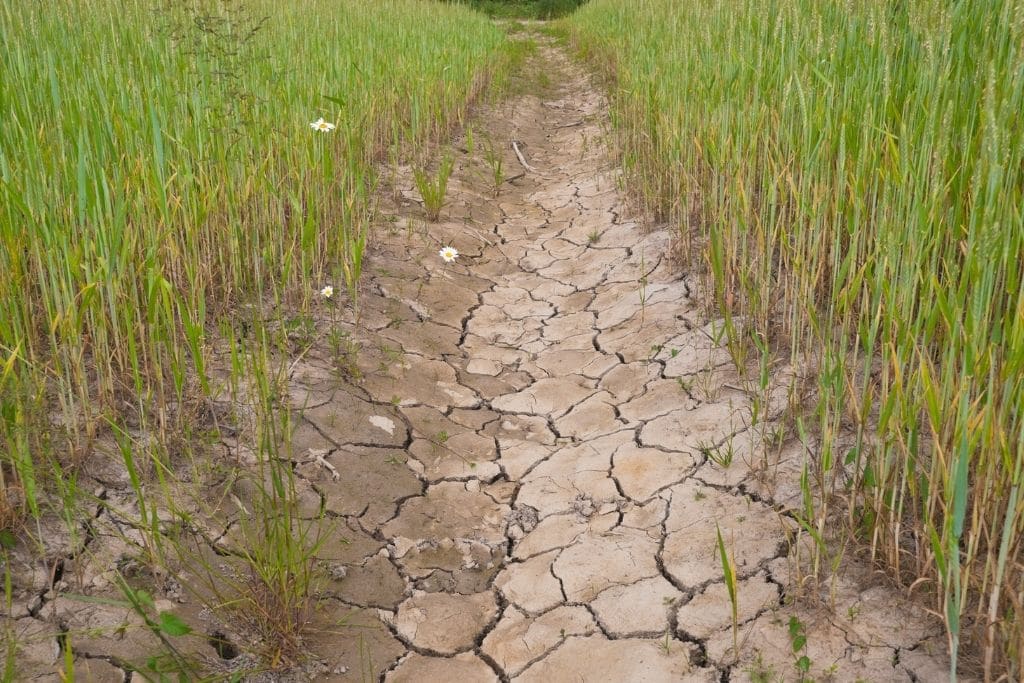Climate change, coupled with water mismanagement and overconsumption, is causing droughts and water shortages across many parts of the globe. Aside from the obvious threat to public health, the subsequent effects of water shortage can vary from food insecurity to increased human conflicts, highlighting the importance of protecting global water resources and using them sustainably. Here are the main causes and effects of water shortage and what we can do about it.
—
It is increasingly evident that droughts around the world are becoming more frequent and intense, as well as are occurring at progressively prolonged periods of time. This is most demonstrable by the ongoing megadrought in the western regions of the US, where it is in the midst of its driest conditions in history.
No continent on Earth has been untouched by water scarcity, and an increasing number of regions are reaching the limit at which they can provide water services sustainably, especially in arid regions. Nearly two-thirds of the world’s population is predicted to face water shortages by 2025. This worrying trend is causing many to pose the question: “are we running out of water”?
The short answer is yes, primarily driven by climate change and global population growth. We explore what other causes are there and the major effects of it around the world.
Causes of Water Shortage

Droughts and Climate Change
Water shortages occur due to a number of factors; one of the biggest drivers of water scarcity is drought. Drought is a natural phenomenon in which dry conditions and lack of precipitation – whether it is rain, snow or sleet – occur over certain areas for a period of time.
While the amount of rainfall can naturally vary between different regions and times of year, climate change and rising global temperatures are altering rainfall patterns, which in turn, impact the quality and spatial distribution of global water resources. Warmer temperatures mean that moisture in soil evaporates at faster rates, and more frequent and severe heat waves exacerbate drought conditions and contribute towards water shortages.
These conditions also create the perfect breeding ground for wildfires, further fuelling drought season and water stress. In the 2018 Intergovernmental Panel on Climate Change (IPCC) report, climate scientists say that groundwater stored in aquifers, which provides 36% of the world’s domestic water supply for over 2 billion people, is highly sensitive to future climate change. They also concluded that wet regions are expected to get wetter while dry regions will get drier.
In China for example, the Yangtze and Yellow Rivers are two major water resources that support the country. They rely on the glacial meltwater from the Qinghai-Tibetan Plateau. Global warming, where temperatures in the glacial region rose by 3- 3.5C over the past half-century, has produced less snow and ice mass, causing glacial run-off into the Yangtze to be reduced by 13.9% since the 1990s.
Poor Water Management and Growing Demand
Today, the world’s population is just short of eight billion people, which translates to a growing demand for water amid water stress from climate change. Urbanisation and an exponential increase in freshwater demand for households are both driving factors behind water shortages, especially in regions with a precarious water supply.
For example in 2018, Cape Town, South Africa experienced a water crisis and became the first modern city to effectively run out of drinking water as a result of extreme drought, poor water resource management and overconsumption.
Likewise, China is also at risk of running out of water due to poor water management. Each year, total renewable water resources per inhabitant is estimated at about 2,018 cubic metres, which is 75% less than the global average, according to the World Bank.
Water Pollution
Contaminated and unsafe water is another contributing factor of water shortages. Water pollution already kills more people each year than war and all other forms of violence combined. As we only have less than 1% of the Earth’s freshwater accessible to us, human activity is actively threatening our own water resources. Water pollution can come from a number of sources, including sewage and wastewater – more than 80% of the world’s wastewater flows back into the environment without being treated, and agricultural and industrial runoff, where pesticides and toxic chemicals leach into the groundwater and nearby freshwater systems. Consequently, precious water resources get contaminated, resulting in less freshwater and drinking water available.
You might also like: 4 Countries with Water Scarcity in 2022
Effects of Water Shortage
The United Nations states that having free access to freshwater is a basic human right. And losing that access to drinking water can be detrimental to human health and lives, as we all need water to survive. However, water scarcity and shortage can lead to other serious impacts on the environment and threaten global peace and security as well.

Food Insecurity
We need water to produce food that we eat. Today, around 70% of freshwater withdrawals go into agriculture, from irrigation and pesticide to fertiliser application and sustaining livestock. As the global population continues to grow, agricultural production is required to expand by another 70% by 2050 to keep up with demand, thereby redirecting even more freshwater resources.
In February 2021, the UN World Food Program reported that severe drought caused by record dry conditions has left an estimated 13 million people facing hunger in the Horn of Africa. Intense and prolonged droughts have decimated food crops and caused high rates of livestock deaths, causing food prices to soar. Families are struggling to buy and secure food as a result, while high malnutrition rates are occurring across the region. The UN warns should the situation worsens, it will spark a humanitarian crisis.
You might also like: Water Crisis in South Africa: Causes, Effects, And Solutions
Increased Human Conflicts
One of the biggest effects of water shortage is that it prompts increased competition between water users, thus potentially sparking conflicts, which could potentially put millions of lives at risk.
In India, drought has triggered serious conflict between water users at the local level, many of whom depend on water for their livelihoods. At a broader level, India has been in conflict with its neighbouring country of Pakistan over water disputes, among other political issues. The two nations have clashed over the control of upstream water barrages and infrastructure projects for decades, which regulated water flow into Pakistan. Water mismanagement and climate change are exacerbating these diplomatic tensions; The Himalayan Glaciers, which feed the Indus Basin, are predicted to diminish further in the coming year and deplete groundwater recharge in the long run.
Similarly, in Egypt, its water supply is being threatened by the development of the Grand Ethiopian Renaissance Dam on the upstream stretch of the Nile River. Though the dam brings huge economic and social benefits for Ethiopia and generate energy to two-thirds of the population, Egypt could potentially lose as much as 36% of the total water supply as the dam reduces water flowing downstream. Egypt could resort to military action to protect its water resources.
You might also like: The Looming Colorado Water Shortage Crisis
Water Is Now Traded as a Commodity
Water has recently joined gold, oil and other commodities that can be traded on Wall Street, prompting fears that the market could dramatically further exacerbate the effects of water shortage and increase competition.
The US’s water trade market, the first of its kind, was launched in 2020 with USD$1.1 billion in contracts tied to California water prices. It allows farmers, hedge funds, and municipalities to hedge against future water availability in California. While this could clear up uncertainty around water prices, treating water as a tradable commodity puts basic human rights in the hands of financial institutions and investors.
This story is funded by readers like you
Our non-profit newsroom provides climate coverage free of charge and advertising. Your one-off or monthly donations play a crucial role in supporting our operations, expanding our reach, and maintaining our editorial independence.
About EO | Mission Statement | Impact & Reach | Write for us




















